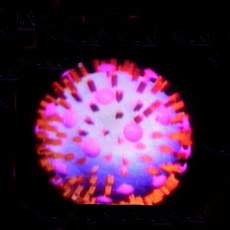Current avian flu is even more dangerous than 1918 Spanish flu pandemic
The H5N1 subtype flu virus can affect not only lungs but also other organs
Last week, two scientific editions, Science and Nature, reported about the successful achievement of American researchers who reconstructed the Spanish flu virus that caused the massive 1918 pandemic. The researchers made a sensational statement that the 1918 virus that killed as many as 50 million people was actually avian flu.
Researchers took serious efforts to understand the mystery of the 1918 pandemic within the past several years. The pandemic was really mysterious: the virus speedily traveled about the world, the clinical course was fulminant when people died of it within 1-2 days and it had an incredibly high death toll.
In 1998, researchers from different countries started an unusual international project aimed to exhume remains of people killed by the Spanish flu virus and reconstruct the genetic material of the virus. It took researchers a long period to get ready for secure opening of burial places of settlers on the Spizberegn Island and those of villagers of one Alaska settlement that became absolutely depopulated at that period because of the sweeping virus. Besides, the researchers also had a pathologist archive of US soldiers who died because of the Spanish flu virus.
When the eight genes of the virus were reconstructed, the researchers decided to venture and apply the reverse genetics methods to reconstruct the Spanish flu virus itself. A group of researchers headed by Ann Raid and Jeffery Taubenberger from the Armed Forces Institute of Pathology and Southeast Poultry managed to reconstruct the virus in a special laboratory that guaranteed secure performance of the experiment. It turned out that the virus belonged to the H1N1 subtype that appeared as a result of a series of mutations in the genes of the avian flu. The mutations made the virus adapt to the human organism (unlike the agents of the 1957 Asian and 1968 Hong Kong pandemics that were reassortants of avian and human viruses).
Researchers obtained reassortants of the Spanish flu virus and the current virus of the same type and compared both with the H5N1 avian flu virus, the one which experts currently fear may cause a new dangerous pandemic.
Doctor of Medicine Anna Sominina from Russia's St.Petersburg National Flu Center told the Izvestia newspaper that researchers first of all want to understand why the Spanish flu virus was so sweepingly lethal. They arrived at a conclusion that the virus contained an optimum set of genes that made for its quick reproduction in the pulmonary tissue. This is the reason why many people died of pulmonary edema, hemorrhages, bronchial pneumonia and so on.
But the researches also revealed that the Spanish flu virus was less dangerous than the avian flu virus killing people today. The H5N1 subtype flu virus can affect not only lungs but also other organs. It cannot be destroyed with interferon, the compound helping the human immunity fight viruses. What is more, it is also stable against the popular flu medications used in Russia and other countries within many years. The Spanish flu lethality made up about 1 percent while the lethality of the new avian flu fluctuates from 50 to 100 percent in different countries.
It is important that the avian flu, the predecessor of the Spanish flu virus, became lethal after 10 important mutations of its genes as a result of which the virus easily adapted to the human organism. As of today, researchers have already determined 5 important mutations in the genes of the H5N1 avian flu.
Anna Sominina says that research works conducted by American experts are particularly important as they may help mankind get ready for the coming pandemic, have reserve vaccine cultures and test systems allowing to detect new viruses quickly.
Virologists pin great hopes on the national activities in flu inspection. Little finance was appropriated for such activities within the past several years. About 400 viruses are defined on Russia's vast territory in a year while the US defines about 300,000 viruses a year. This problem is actually burning for the world community because Russia has already been attacked by avian flu. If the plan of national activities is adopted on the governmental level, regional laboratories will have an opportunity to track new viruses and get ready for coming pandemics.
Experts recommend people take more care of their health: go in for sports, walk a lot, take vitamins. They say it is important to wear clothes fitting the weather, have flu vaccinations and stay away from office or school when feeling a respiratory infection is beginning.
You can discuss this article on Pravda.Ru FORUM
Subscribe to Pravda.Ru Telegram channel, Facebook, RSS!




